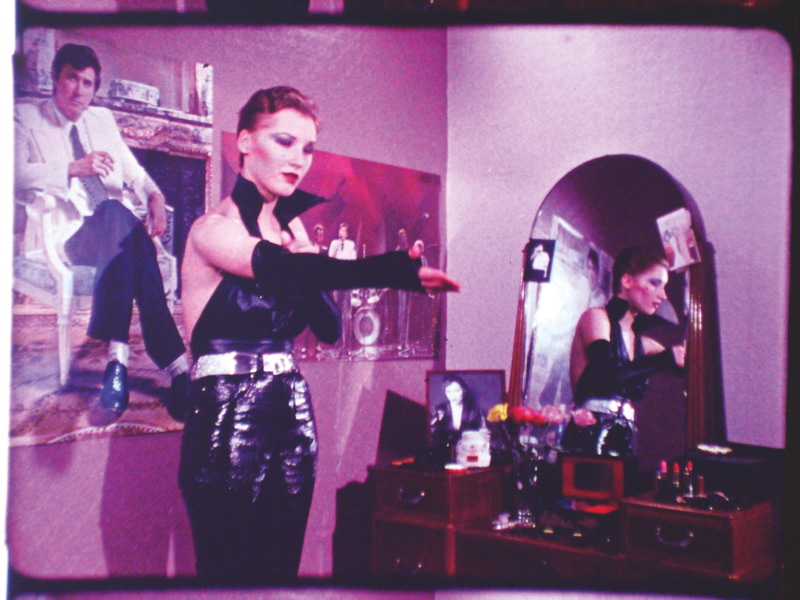Almost everyone above a certain age has their own indelible image of glam, often of being dazed and amazed by Bowie/Ziggy on Top Of The Pops or seeing a pic of the New York Dolls for the first time. Yet the sensibility and style behind the exciting, futuristic sounds, extravagant fashions and glitter-dappled personas that exploded across Britain during the years 1971-5 have never really been examined in depth until now, with Tate Liverpool’s Glam! The Performance Of Style.
“It is curious, especially given how visual and stylish it was, that no one’s ever attempted to do a show about glam and glam rock, although there have been so many exhibitions about the punk era that it might seem as if you have this sort of blank area between the sixties and punk,” says the Tate’s Darren Pih. “Yet I do feel that glam was more meaningful to more people than punk, which was quite extreme as a style culture, whereas glam was more of a re-tuning, more of a call to style.
“Glam wasn’t something that just exploded in 1971 – it’s something that had a back story.”
The exhibition reveals the genealogy of glam through more than 100 artworks from David Hockney, Andy Warhol, Cindy Sherman, Allen Jones, Richard Hamilton, Peter Hujar and many more.
The exhibition also includes a new adaptation of Marc Camille Chaimowicz’s spectacular, glitter-strewn installation Celebration? Realife featuring mirror balls, strobe and stage lighting, and music from David Bowie.
“In some ways glam was a continuation of the sixties,” Pih contends. “Sixties political ideas like gay lib, identity politics, performance art and the body used as a medium of expression really came into focus with glam rock around 1972.
“Bowie, for instance, was obsessed with Warhol and went to meet him at the Factory in New York in 1971, where people like Candy Darling, Holly Woodlawn and all of those characters were really playing with gender and this idea of transgression. Even if Warhol, a small-town boy, couldn’t magnetize glamour, he could create it by anointing his own superstars. If you repeated the right image, as in his screen prints, then you could create, or reiterate, stardom. That’s something important that Bowie and glam rock took from Warhol and the Factory. Like him, he wanted to create this parallel glamour universe. Glam allowed a certain assertion of identity – it enabled you to reinvent yourself from scratch.
“You also had people like Jack Smith creating films and staging performances in his New York loft throughout the sixties that, in some ways, seem to embody the whole aesthetic of glam, with excessive visuals, glitter and the use of extreme gender ambiguity. “
Another important strand in the DNA of glam was the art schools, “where you had Bryan Ferry being taught by Richard Hamilton, as was Nick de Ville, who designed the sleeves for the first five Roxy Music albums”, says Phi. “The idea was that what you chose to present to the world could be very cool and very specific.
“It wasn’t just about Roxy Music, though. The way the art schools recruited at the time was very democratic and so there was a whole influx of working-class people for the first time. What happened because of that was a coming together of fine art, fashion and pop music.
“The idea of what you chose to wear, notions of dandyism and heightened style are something that came from mod culture through the art schools into glam rock in the early seventies.
“The thing about glam was that it was more than just a style – it was a state of mind. This show is primarily an art exhibition but each room will be contextualised by ephemera. So basically it’s going to try to reveal the idea that glam was fine-art ideas, it was the art schools, it was Warhol, it was ideas about performance and gender, all being played out on the front edge of popular culture.”
Glam! The Performance Of Style, until 12 May, Tate Liverpool
Like the Big Issue North on Facebook




Leave a reply
Your email address will not be published.